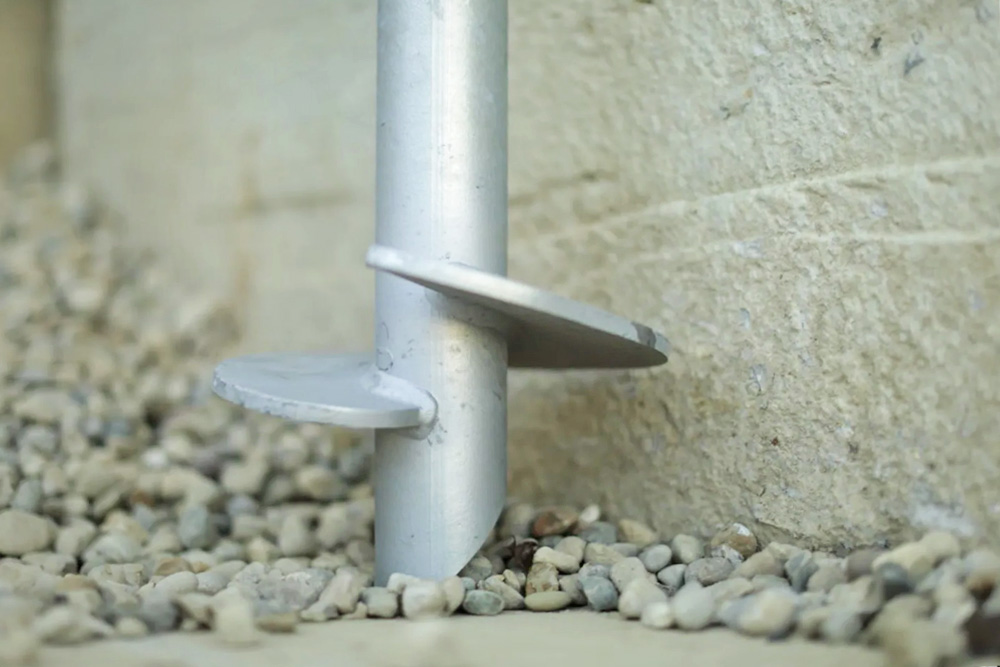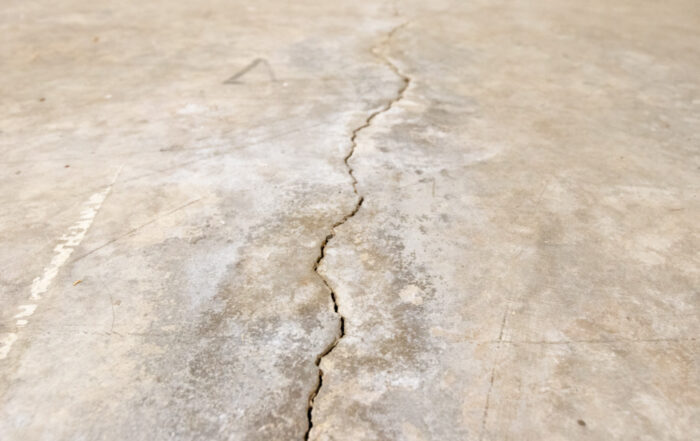Exterior Foundation Repair: How It Works & What To Expect

If there’s one thing homeowners can agree on, it is that our homes are an important part of who we are. They are our safe havens and the realization of a lot of hard work and dreaming. This is exactly why severe problems like foundation cracks can throw us for a loop and cause us major worries.
If your home is in need of an exterior foundation repair, your head is likely swimming with questions such as:
- How severe is the damage?
- What are my repair options?
- How much will the repairs cost?
Take a deep breath. You’re in the right place. As Texas’s leading foundation repair company, we’ve got the solutions you need to fix foundation cracks and get your home back on track. Today, we’ll talk you through exterior foundation repair and how it can help you and your home. Keep reading to learn more!
What Are Exterior Piers?
Foundation cracks may not look particularly serious. But these hairline cracks are often indicative of a huge problem.
Foundations often shift and move as time goes on due to the soil moving underneath. This also often moves your concrete foundations and can lead to a whole host of problems for your home.
When it comes to foundation repair, one common solution that professionals often consider is the use of exterior piers. Exterior piers are structural supports installed around the exterior of a building to stabilize and strengthen its foundation. These are typically more useful for homes that want to prevent further foundation shifting around the perimeter rather than the interior of their home.
This is typically easier than installing interior piers, which require breaking your existing concrete slab to install. Piers is typically used in scenarios where your home has severe structural cracks that affect the overall structural integrity of your home. Severe cracks can not be fixed with concrete crack filler or mudjacking alone.
Pros and Cons of Using Exterior Piers
✅ Pros:
- Enhanced Stability: One of the primary benefits of exterior piers is their ability to provide exceptional stability to a compromised foundation. By transferring the weight of the structure to the piers, these supports help to alleviate the stress on the foundation and prevent further movement or settling. This can effectively halt or minimize foundation damage, ensuring the long-term structural integrity of the building.
- Suitable for Various Soil Conditions: Exterior piers are a versatile solution as they can be installed in various soil conditions. Whether the soil is expansive, prone to erosion, or features high water content, exterior piers can be customized to accommodate these challenges. This adaptability makes them an excellent choice for foundation repairs in different geographical locations.
- Minimal Disruption to Interior Spaces: Unlike interior pier installation, which may require invasive measures like breaking through floors or removing interior finishes, exterior piers offer a non-intrusive solution. Most of the work is carried out outside the building, minimizing disruption to occupants and preserving the interior aesthetics of the structure.
- Long-lasting Results: Exterior piers are known for their durability and long-term effectiveness. Once installed, they provide a reliable foundation support system that can withstand the test of time. This can bring peace of mind to homeowners or property owners, knowing that their foundation is well-protected against future damage.
❌ Cons:
- Extensive Excavation: The installation of exterior piers requires excavation work around the perimeter of the building. This process involves digging deep into the ground to create access points for the piers. Consequently, it can be a time-consuming and labor-intensive process, leading to increased costs and potential disruption to the surrounding landscape.
- Weather Dependency: The installation of exterior piers is heavily dependent on weather conditions. If the ground is saturated or frozen, it can pose challenges to the excavation process and affect the stability of the piers. Delays due to unfavorable weather can prolong the repair timeline and add to the overall project cost.
- Cost Considerations: Foundation repairs involving exterior piers generally tend to be more expensive compared to other repair methods. The cost of materials, labor, and excavation can significantly impact the overall project budget. However, it is important to note that the extent of the repair required, as well as the specific characteristics of the site, will influence the final cost.
- Potential Landscaping Disruption: The excavation process for exterior piers can cause temporary disruption to the landscaping around the building. Plants, trees, and other outdoor features may need to be relocated or protected during the installation. While efforts are usually made to minimize damage, there is a possibility of some landscaping adjustments being necessary post-repair.
5-Step Installation Process for Exterior Piers
Knowing what to expect during your foundation repair can help you to feel calm and prepared. The installation of exterior piers typically involves the following steps:
1) Site Inspection
A professional foundation repair contractor will conduct a thorough assessment of the site to determine the extent of the foundation damage and the appropriate number and placement of the piers. They will likely look for signs of foundation shifting, such as:
- Horizontal cracks on your foundation walls
- Exterior cracks on the foundation walls
- Doors or windows that won’t close properly
- Bowing walls
2) Excavation
The area surrounding the building’s perimeter is excavated to create access points for the piers. The depth and size of the holes will depend on the specific needs of the foundation repair. You may need to hire a landscaper to help remove and replace any vegetation that surrounds your home.
3) Pier Placement
Steel piers or helical piers are inserted into the excavated holes and driven into the ground until they reach stable soil or bedrock. Hydraulic jacks are used to lift the structure onto the piers, effectively transferring the load. This should help even out your foundation wall.
4) Structural Reinforcement
Additional measures may be taken to reinforce the foundation, such as installing brackets to connect the piers to the structure or using underpinning methods to further stabilize the foundation.
5) Site Restoration
Once the piers are in place, the excavated areas are backfilled and compacted. Efforts are made to restore the landscaping as much as possible, though it may require additional time for the vegetation to fully recover.
Work With a Team That Knows Foundation Repair
When it comes to fixing foundation cracks and keeping your home safe, you need Perma Pier! We are Texas’ top foundation repair company and are well-versed in the challenges that homeowners in the area face. From residential to commercial properties, work with the team who does it all and has the experience to prove it. Contact us today to schedule your foundation inspection!



